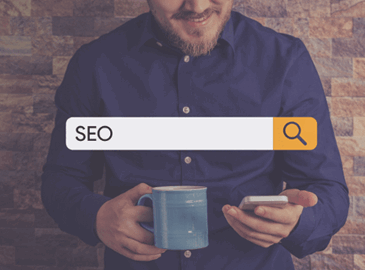The best online tools to help you and your business
The web is a wonderful place providing countless possibilities.
Online & Tech
You know the feeling - we have all been through it. You want to purchase an item and you know exactly what you want. But then you go to the dreaded checkout system - a real bane and eye sore for many of us. This process can be frustrating. And that’s before you try to remember your password.
All these layers of confusion just to make a small transaction. Is it any wonder that the rate of abandonment at checkout is so high (around an average of 70%)? Even with consumers short attention spans, and tendencies to scroll to other sites, this is an alarmingly high figure. The question is how can you prevent your eCommerce site from falling victim to this common trap of abandon cart. These fundamental tips will help you keep customers on the checkout ready to spend.
Ask yourself, do you want to be spending more than what you originally intended to make a purchase? We are going to assume the answer is no. So why would you expect your customers to welcome extra hidden charges. Do you think customers want to be spending an extra £10 in shipping costs or “necessary” add ons? This is where you really need to think like a customer. Instead of adding this “surprise” cost add on why not state this much earlier.
Make it clear how the price will be affected early on from shipping. That way you’re being honest and not trying to confuse your shopper. And maybe if you need the shipping costs why not then make deductions from a future purchase - this is thinking like a customer.
We live in an age where payment has never been easier or simpler. If you want to purchase something this can be done with a mere tap.
Whilst this isn’t an approach that can be replicated online your checkout page needs to reflect the changing consensus around payment. As an eCommerce business, it’s down to you to adapt to your audience and not the other way around. With that in mind, provide a variety of payment options at checkout.
Consider allowing the use of alternative platforms such as Apple Pay and Pay Pal. This will give customers the option to use their accounts and make a transaction much quicker.
There is a factor you need to consider which isn’t related to your checkout page at all. In fact, you could have the most optimised user-friendly checkout page in the history of ecommerce and still mess up if you haven't considered what we are about to say. We are of course talking about your prices. It’s crucial that your prices are comparable with your competitors.
This will of course depend on the standard of your industry and whether you think reducing your price will work for you. But if you offer a high price for a product, that can be bought much cheaper elsewhere, it won’t matter how good your checkout page is - customers won’t even be getting that far anyway.
There is nothing wrong with a bit of up-selling but we stress the words a bit.
Don’t populate your checkout page with a wide array of options for people to add to what they are purchasing. You should assume people are on the checkout page because they have gone through the process of research and consideration. So really, they know what they want and how much they intend to spend. If you want to up-sell ensure it’s going to add more benefits to what they have already got.
Therefore, having a thousand pop ups with multiple offers fly out at customers, who are otherwise ready to pay, sends out the wrong message. In an article by E-consultancy, they refer to this practice as misdirection - essentially highlighting areas of the site which lead to the more expensive option and making other parts less clear to the human eye. Don’t try and mislead your audience when they know what they want.
And last but by no means least, have you ever considered asking a customer why they abandoned the page and why they haven’t made their purchase?
It’s perfectly plausible that they simply forgot or they had somewhere to be. People have busy lives and don’t always have the time to go through the checkout and make the purchase there and then. That doesn’t mean they don’t want to buy from you.
A friendly ‘nudge’ is a nice touch. It demonstrates that you value your customer and their time. An individual will only appreciate the extra effort and a bit of flattery isn’t a bad thing either. Use an automated email and send that to them after they have abandoned their purchase at checkout. But why not go one step further than that. Personally send them an email and ask them why they abandoned their purchase, and better yet, if there is anything else you can help them with. It’s a lovely gesture and you’ll only come across well showing this extra level of care.
At Payzone, we're dedicated to supporting small businesses. Find out more about our online payment solutions and get a free quote.

The web is a wonderful place providing countless possibilities.

We think that you have probably come across the acronym SEO before...

One of the many challenges facing small businesses is how and where they sell or provide services to
Payzone Bill Payments Limited Registered Office: 100 Wood Street, London, England. EC2V 7ER. Registered in England and Wales No. 11310918 VAT Number: GB 172670502. Payzone site uses cookies. Some of these cookies are essential, while others help us to improve your experience by providing insights into how the site is being used. View our Cookie Policy and our Privacy Policy.




Cert No. 9819